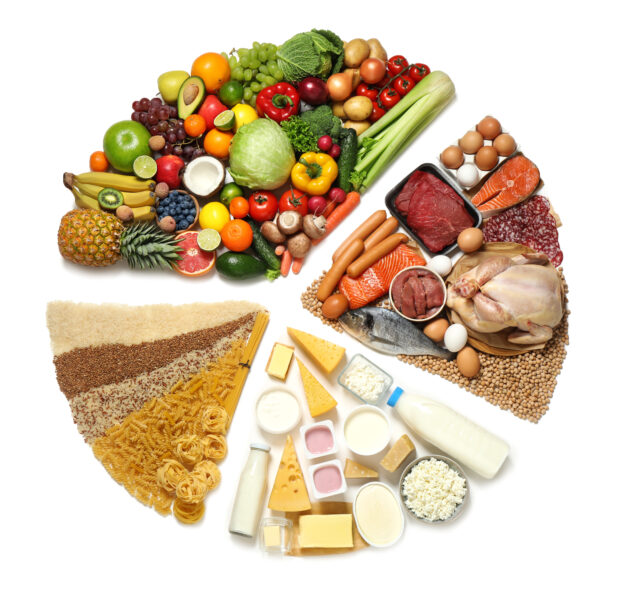I am old enough to have been taught the four basic food groups in elementary school and the importance of eating some from each of the groups no matter how much I might dislike one or more of them. Dietary guidelines visualized by the U.S. Food and Drug Administration have evolved since—the food wheel, the food pyramid, and now, MyPlate. They all have in common the idea that healthy eating is about maintaining a proper balance of nutrients.
Executive Summary
The classification of “ultra-processed” food is spawning research—and controversy. While it’s not hard to find examples of ultra-processed foods that are nutritious, like soy milk, for the most part they serve up empty calories, and studies indicate that people consuming those calories also tend to overeat. Here, Praedicat’s David Loughran reports that while this risk is in the emerging damage phase—with a growing body of research becoming available on the topic—no plaintiff has yet succeeded in holding food companies liable in U.S. courts for the consequences of overeating. Still, it’s likely that a government or individual legal action is looming.How those nutrients are delivered in food products has never been part of the guidance. If nutrition scientists like Carlos Monteiro of the University of Sao Paulo, Brazil, have their way, however, food’s form factor will one day feature far more prominently.
Monteiro first coined the term “ultra-processed food” in a 2009 commentary entitled “Nutrition and health. The issue is not food, nor nutrients, so much as processing.” Monteiro’s assertion stemmed from a wealth of research demonstrating that rising rates of obesity and chronic disease throughout the world were correlated with ever increasing consumption of convenience foods. By 2018, Monteiro’s division of foods by extent of processing was baked into the United Nation’s Sustainable Development Goals in the form of the NOVA system of food classification, along with the strong recommendation that individuals avoid eating ultra-processed foods and that governments act to limit their availability.
NOVA (strangely, not an acronym) defines four food groups according to the extent and purpose of industrial processing.
- Group 1 foods are minimally processed to remove unwanted parts and otherwise make ready for cooking; examples include fresh fruits and vegetables, nuts and grains, meat, and milk.
- Group 2 foods, processed culinary ingredients such as sugar, salt and oils, are derived from Group 1 foods and are generally not intended to be consumed on their own.
- The processed foods of Group 3 like canned vegetables, cheese and smoked fish are made by combining Group 1 and Group 2 foods. Processed foods typically involve cooking or preserving and are made with a small number of ingredients.
- And then there is the ultra-processed food of Group 4, which NOVA defines as food that has little or no intact Group 1 food and involves ingredients and processing technologies that are unavailable in the typical domestic kitchen.
Ultra-processed food ingredients often include Group 2 sugar, salt and oils, but also synthetic additives such as flavorings, colorings, emulsifiers, thickeners and preservatives.
Ultra-processed foods are ready-to-consume, hyper-palatable, low-cost and, according to critics, designed to replace all other food groups. By one estimate, ultra-processed foods—think soft drinks, chips, cookies, TV dinners, sweetened breakfast cereal—account for nearly three-quarters of the U.S. food supply today.
The NOVA classification system is now widely deployed in studies of the impact of ultra-processed food on human health. Several recently published studies employing the UK Biobank are illustrative of the typical study design. Study participants provide detailed information about their food consumption over a 24-hour period, which researchers use to determine the fraction of caloric intake accounted for by ultra-processed food. A prospective cohort design then associates this baseline measure of ultra-processed food consumption with the subsequent development of disease.
In one UK Biobank study published in July 2022, researchers estimated that substituting 10 percent of ultra-processed food with minimally processed food consumption decreases the risk of dementia by 19 percent. In another UK Biobank study published in August 2022, researchers demonstrated a strong relationship between ultra-processed food consumption at baseline and the subsequent development of coronary heart disease and cerebrovascular disease.
Other well-documented associations between ultra-processed food consumption and disease include cancer, type 2 diabetes, and gastrointestinal and respiratory diseases.
 Monteiro wrote in his original commentary that a food classification system based upon extent of processing is “bound to have some problems and exceptions.” On that point, his critics agree. Take something like soy milk, which meets the definition of an ultra-processed food. Many nutrition scientists would argue that soy milk compares favorably to cow’s milk, which is a Group 1 minimally processed food. The issue is that the NOVA system does not consider a food’s nutrient content; it cares only about how the food was processed.
Monteiro wrote in his original commentary that a food classification system based upon extent of processing is “bound to have some problems and exceptions.” On that point, his critics agree. Take something like soy milk, which meets the definition of an ultra-processed food. Many nutrition scientists would argue that soy milk compares favorably to cow’s milk, which is a Group 1 minimally processed food. The issue is that the NOVA system does not consider a food’s nutrient content; it cares only about how the food was processed.
Nonetheless, while it’s not hard to find examples of ultra-processed foods that are nutritious, research shows that these foods more often than not tend to serve up “empty calories,” by which we mean low nutrient density combined with high energy density. In addition, ultra-processed foods tend to be higher in sugar, salt and fat, and lower in dietary fiber. The well-respected “Food Compass” rating system developed at Tufts University that scores some 8,000 foods on a 100-point scale from least to most healthful finds Group 1 minimally processed foods score an average of 82, whereas Group 4 ultra-processed foods score an average of 37.
The trouble with empty calories is that they’re so darn tasty. In 2019, researchers at the National Institutes of Health randomly assignedstudy participants to either an ultra-processed or minimally processed diet for a two-week period. Each served meal was designed to deliver equivalent calories and nutrients, but study participants could eat as much or as little as desired. At the end of two weeks, those eating the ultra-processed diet had consumed an average of 500 more calories per day and gained two pounds more weight than those eating the minimally processed diet. One potential explanation for this finding is that ultra-processed food is simply more palatable. Study participants ate faster on the ultra-processed diet, and eating faster can overwhelm the body’s natural sense of satiety leading to overeating.
Read About Emerging Damage Risks and Emerging Litigation in these Carrier Management articles written by Praedicat executives:
A complementary finding by a group of Italian researchers reported in the British Medical Journal indicates that nutrient-poor diets correlate with higher mortality (no surprise there) but also that a significant proportion of that higher mortality is explained by ultra-processing. In other words, as implied by the NIH study, it’s not just the poor quality of ultra-processed foods that affects health; its form-factor matters, too.
And this is how food companies could find themselves in the hot seat. We all know that overeating is unhealthy. But if overeating is by design, then who’s responsible for its consequences? Ultra-processed food companies are in the business of making their foods delicious, irresistible, even addictive. While controversial, food addiction is a heavily studied phenomenon in the biomedical literature and an increasingly recognized psychological disorder.
To date, no plaintiff has succeeded in holding food companies liable in U.S. courts for the consequences of overeating, but as evidence continues to mount that a diet heavy in ultra-processed foods leads to poor health and that consumers of ultra-processed food have limited control over how much of the food they eat, it seems like a safe bet that a well-situated individual or governmental plaintiff will try again.





















 What Industry Executives Are Saying About Loss Reserves, Social Inflation
What Industry Executives Are Saying About Loss Reserves, Social Inflation  Time-Tested Loss Reserving Methods Challenged: AM Best
Time-Tested Loss Reserving Methods Challenged: AM Best  USAA to Lay Off 220 Employees
USAA to Lay Off 220 Employees  Electrical Issue Found in Ship That Caused Baltimore Bridge Collapse
Electrical Issue Found in Ship That Caused Baltimore Bridge Collapse 




